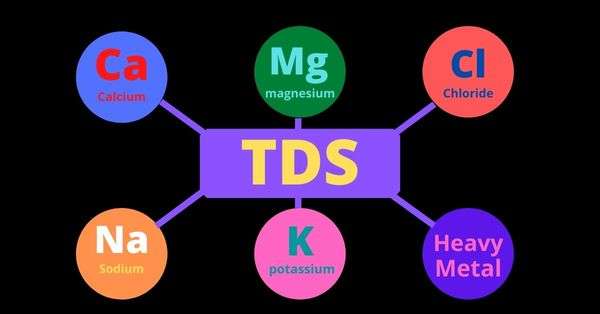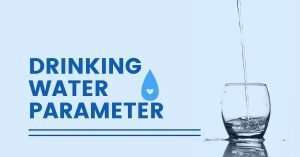TDS represent the Total Dissolved solids in the water. It consists of inorganic salts as well as small amounts of organic compound. The Total Dissolved Solids means present inorganic salts like calcium, magnesium, potassium, sodium, carbonate, nitrate, bicarbonate, chloride, sulfate and heavy metal found in the water.
TDS is a vital parameter in your drinking water or industrial uses. High TDS means high concentration soluble solids present in the water. The water is a universal solvent, which means any particle can be dissolved in the water very easily. Some times we can see very harmful chemicals present in the water, which was very unhealthy.
The water taste changes depending on the Total Dissolved Solids present in the water.
Total Dissolved Solids for Drinking Water Different Level:
| TDS level (mg/litre) | Water Quality Rating |
| Less than 300 mg/litre | Excellent |
| 300 – 600 mg/litre | Good |
| 600 – 900 mg/litre | Fair |
| 900 – 1200 mg/litre | Poor |
| above 1200 mg/litre | very salty |
Now, you can understand high Total Dissolved Solids in drinking water means a higher chance to present harmful contamination. The water can contaminant basically from industrial wastage mixed to the water.
Read also: Drinking Water Contaminants Reason and Bed Effects on Humen Body
The water analysis is a solution to understand the level of Total Dissolved Solids. TDS analysis in the TDS meter is very simple & get instant results. It is a very simple process to analyse with a TDS meter. Just deep the TDS meter probe inside the water & switch on, you see the result instantly.
How to control Total Dissolved Solids ?
The water purification facility can remove dissolved solids in water using reverse osmosis (RO), responsible for high TDS levels. Reverse osmosis removes almost all dissolved solids, including many harmful chemicals. The reverse osmosis also removes healthy minerals such as calcium and magnesium. This water passes through a magnesium and calcium mineral bed to add minerals to the water. Mineral beds also increase pH and reduce water erosion capacity.
Drinking Water Purification:
If you are dependent on municipality water for drinking & cooking, you should buy a water purifier. The municipality water was well treated but during transfer through the pipeline, sometimes it may contaminant in the portion of line leakage, rusted iron dissolve & long time storage in the overhead tank can be lead to microbial growth.
The best quality water purifier can protect from all of these problems for drinking water. The RO water purifier is best for remove high TDS & any contaminant from the water. Some branded company RO water purifier prices under Rs. 10000/- in the market. So any middle-class family can efforts to buy it easily.
As per the doctor recommendation minimum, 2-3 liter water need to drink every day. If you drink daily 2-3 liter contaminant water, definitely outcome result not so good.
My recommendation first, analyse TDS in your supply of water. If you found high TDS, then the best choice RO water purifier otherwise Gravity water filter or UV/UF Water purifier. This type of water purifier prices 2-4 thousand rupees only.
Read also: Complete Guide for Buying A New Water Purifier
Frequently Asked Questions (FAQs)
Q. Is TDS in water beneficial or harmful?
The Total dissolved solids (TDS) are found at different levels in the water. The zero TDS level of water does not promote good health, and also, TDS levels that are higher than normal can be very harmful. You should maintain as per standard limit to drinking.
Q. Why is TDS a vital parameter?
TDS levels can be measured in water to determine whether it is safe to drink. The maximum TDS level in drinking water is 500mg/liter, and this applies regardless of whether your water comes from a nearby tank or a lake. If the level is more than 500mg/liter, you should not consume that water.
Q. How do you lower the TDS in your drinking water?
Water purifiers with reverse osmosis technology (RO) are great solutions to lower high TDS levels in the water. These purifiers feature cutting-edge technology that reduces TDs levels while ensuring safe drinking water. Check out the latest RO water purifiers to see if one is right for you.
You can check the lifespan and functionality of your RO membrane with a TDS Meter and even replace it if needed.
Q. What’s the relationship between TDS & the hardness of water?
Hardness can be defined as the concentration of calcium or magnesium salts in water. TDS refers to total dissolved solids, and they can be both organic and inorganic substances.




